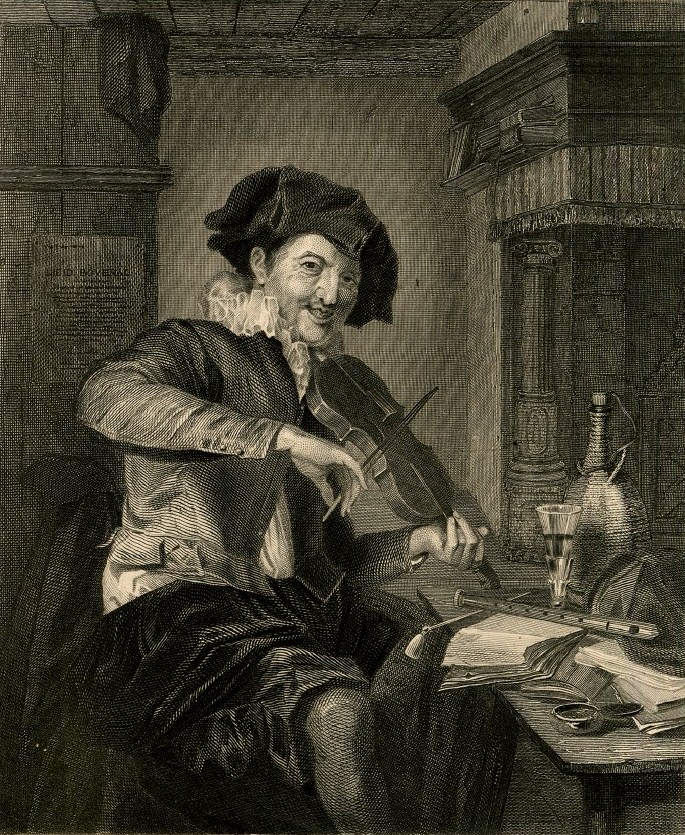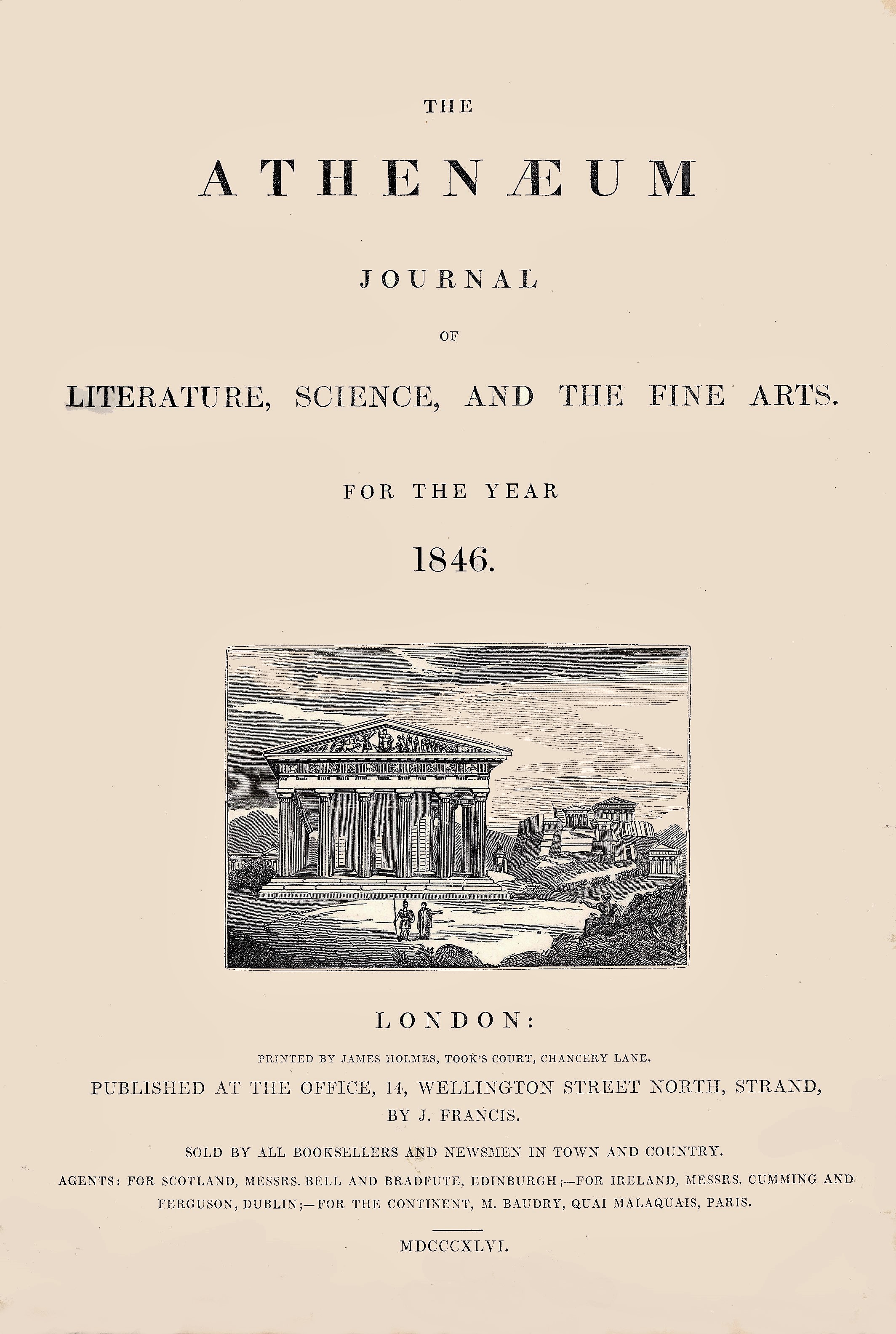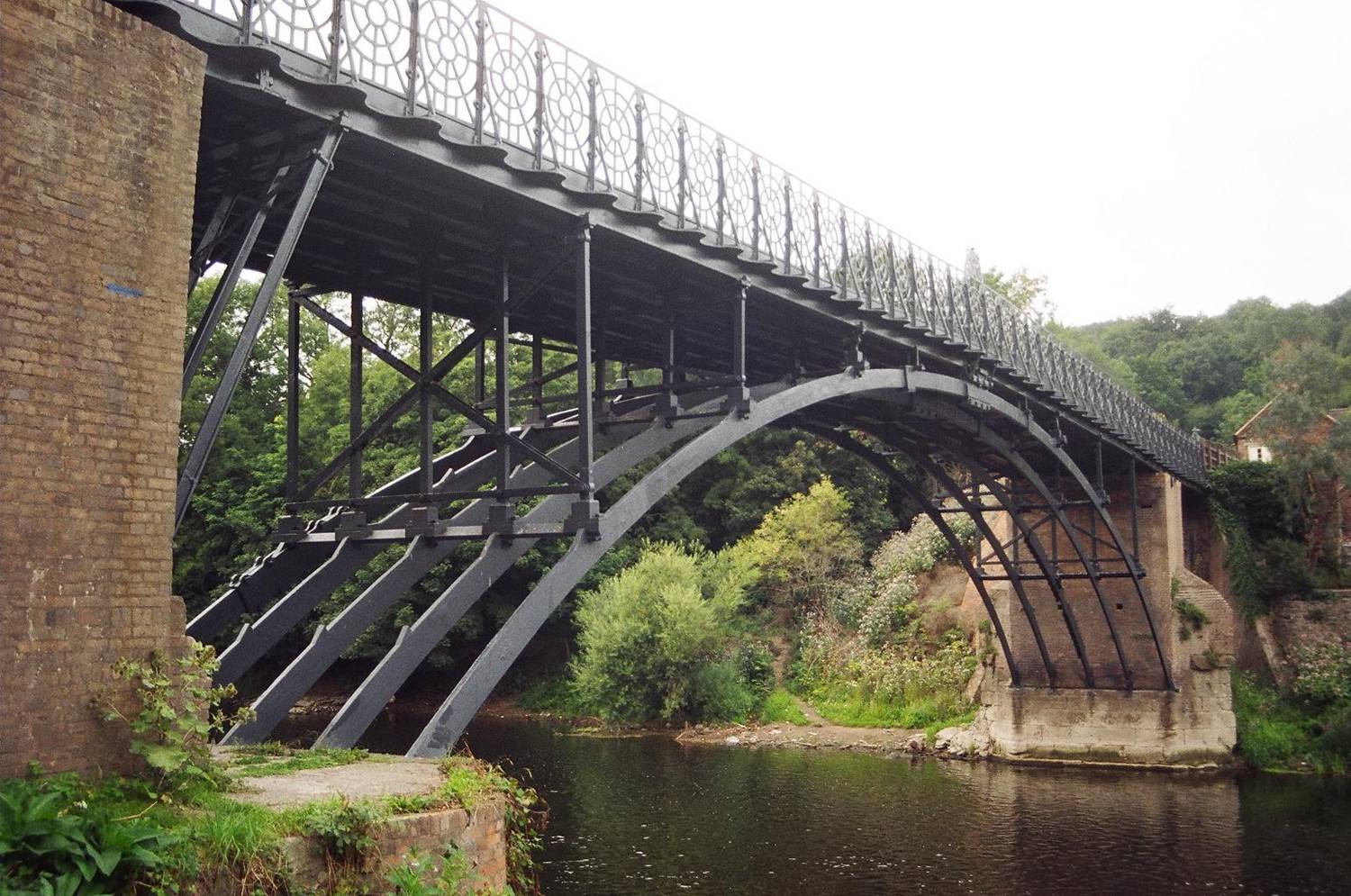|
Ellen Shenton
Ellen Shenton (c1828-1859) was an English sculptor who exhibited Byronic, biblical, and Shakespearian subjects at the Royal Academy in the 1850s. Ellen Maria Nicholson Shenton was baptised in 1828, the daughter of Henry Shenton, an engraver, and the sister of Henry Chawner Shenton and William Kernot Shenton. All three children became sculptors whose work was exhibited at the Royal Academy. The family lived in Kentish Town, London, before moving to the Regent's Park area. She was active from 1850 until her death in 1859. The ''London Evening Standard'' picked out her piece ''Medora'' for praise in their review of the 1851 Royal Academy show. Her statuette ''Parasina'' (1852) was described as having "elegance" in ''The Literary Gazette ''The Literary Gazette'' was a British literary magazine, established in London in 1817 with its full title being ''The Literary Gazette, and Journal of Belles Lettres, Arts, Sciences''. Sometimes it appeared with the caption title, "London Li ... [...More Info...] [...Related Items...] OR: [Wikipedia] [Google] [Baidu] |
Royal Academy
The Royal Academy of Arts (RA) is an art institution based in Burlington House on Piccadilly in London. Founded in 1768, it has a unique position as an independent, privately funded institution led by eminent artists and architects. Its purpose is to promote the creation, enjoyment and appreciation of the visual arts through exhibitions, education and debate. History The origin of the Royal Academy of Arts lies in an attempt in 1755 by members of the Society for the Encouragement of Arts, Manufactures and Commerce, principally the sculptor Henry Cheere, to found an autonomous academy of arts. Prior to this a number of artists were members of the Society for the Encouragement of Arts, Manufactures and Commerce, including Cheere and William Hogarth, or were involved in small-scale private art academies, such as the St Martin's Lane Academy. Although Cheere's attempt failed, the eventual charter, called an 'Instrument', used to establish the Royal Academy of Arts over a decad ... [...More Info...] [...Related Items...] OR: [Wikipedia] [Google] [Baidu] |
Henry Chawner Shenton
Henry Chawner Shenton (1803–1866) was an English engraver. Life He was born at Winchester, and became a pupil of Charles Warren, one of whose daughters he married. He died suddenly at Camden Town on 15 September 1866. Works Shenton was a line engraver in the British style typical of the early 19th century. His early commissions were book illustrations, from designs by Thomas Stothard, Thomas Uwins, Richard Westall, Edward Henry Corbould, and others; some these he exhibited with the Society of British Artists between 1825 and 1832. Subsequently, he executed plates on a larger scale, including ''The Stray Kitten'', after William Collins, and ''The Hermit'', after Alexander George Fraser. For William Finden's ''Gallery of British Art'' he engraved ''A Day's Sport in the Highlands'', after Abraham Cooper, and ''The Loan of a Bite'', after William Mulready. Shenton's best-known plates were published by the Art Union of London The Art Union of London, established in 1837, was a ... [...More Info...] [...Related Items...] OR: [Wikipedia] [Google] [Baidu] |
Royal Academy Of Arts
The Royal Academy of Arts (RA) is an art institution based in Burlington House on Piccadilly in London. Founded in 1768, it has a unique position as an independent, privately funded institution led by eminent artists and architects. Its purpose is to promote the creation, enjoyment and appreciation of the visual arts through exhibitions, education and debate. History The origin of the Royal Academy of Arts lies in an attempt in 1755 by members of the Royal Society of Arts, Society for the Encouragement of Arts, Manufactures and Commerce, principally the sculptor Henry Cheere, to found an autonomous academy of arts. Prior to this a number of artists were members of the Society for the Encouragement of Arts, Manufactures and Commerce, including Cheere and William Hogarth, or were involved in small-scale private art academies, such as the St Martin's Lane Academy. Although Cheere's attempt failed, the eventual charter, called an 'Instrument', used to establish the Royal Academy ... [...More Info...] [...Related Items...] OR: [Wikipedia] [Google] [Baidu] |
Kentish Town
Kentish Town is an area of northwest London, England in the London Borough of Camden, immediately north of Camden Town. Less than four miles north of central London, Kentish Town has good transport connections and is situated close to the open spaces of Hampstead Heath. Toponymy The name of Kentish Town is probably derived from ''Ken-ditch'' or ''Caen-ditch'', meaning the "bed of a waterway" and is otherwise unrelated to the English county of Kent. In researching the meaning of ''Ken-ditch'', it has also been noted that ''ken'' is the Celtic word for both "green" and "river", while ''ditch'' refers to the River Fleet, now a subterranean river. However, another theory is the name comes from its position near the Fleet; it has been suggested that Kentish Town, which lies in between two forks of the Fleet, takes its name from ''cant'' or ''cantle'' (from the Middle English meaning "corner"). History Kentish Town was originally a small settlement on the River Fleet (the waterwa ... [...More Info...] [...Related Items...] OR: [Wikipedia] [Google] [Baidu] |
Regent's Park
Regent's Park (officially The Regent's Park) is one of the Royal Parks of London. It occupies of high ground in north-west Inner London, administratively split between the City of Westminster and the Borough of Camden (and historically between Marylebone and Saint Pancras parishes). In addition to its large central parkland and ornamental lake, it contains various structures and organizations both public and private, generally on its periphery, including Regent's University and London Zoo. What is now Regent's Park came into possession of the Crown upon the dissolution of the monasteries in the 1500s, and was used for hunting and tenant farming. In the 1810s, the Prince Regent proposed turning it into a pleasure garden. The park was designed by John Nash and James and Decimus Burton. Its construction was financed privately by James Burton after the Crown Estate rescinded its pledge to do so, and included development on the periphery of townhouses and expensive terrace dw ... [...More Info...] [...Related Items...] OR: [Wikipedia] [Google] [Baidu] |
Evening Standard
The ''Evening Standard'', formerly ''The Standard'' (1827–1904), also known as the ''London Evening Standard'', is a local free daily newspaper in London, England, published Monday to Friday in tabloid format. In October 2009, after being purchased by Russian businessman Alexander Lebedev, the paper ended a 180-year history of paid circulation and became a free newspaper, doubling its circulation as part of a change in its business plan. Emily Sheffield became editor in July 2020 but resigned in October 2021. History From 1827 to 2009 The newspaper was founded by barrister Stanley Lees Giffard on 21 May 1827 as ''The Standard''. The early owner of the paper was Charles Baldwin. Under the ownership of James Johnstone, ''The Standard'' became a morning paper from 29 June 1857. ''The Evening Standard'' was published from 11 June 1859. ''The Standard'' gained eminence for its detailed foreign news, notably its reporting of events of the American Civil War (1861–1865 ... [...More Info...] [...Related Items...] OR: [Wikipedia] [Google] [Baidu] |
The Literary Gazette
''The Literary Gazette'' was a British literary magazine, established in London in 1817 with its full title being ''The Literary Gazette, and Journal of Belles Lettres, Arts, Sciences''. Sometimes it appeared with the caption title, "London Literary Gazette". It was founded by the publisher Henry Colburn, who appointed the journalist and contributor William Jerdan as editor in July 1817. Jerdan wrote most of the articles and set the character of the magazine, and then became a shareholder and eventually the owner. He retired in 1850, and the magazine ceased publication in 1863. The format of the magazine was always essentially the same, each issue consisting of about sixteen pages typeset in three columns. Illustrations were rarely included. The periodical would feature several book reviews, with the leading article being a book review occupying two or three pages. Feature sections included "Original Correspondence" and a social column as well as notice of theatre productions. A ... [...More Info...] [...Related Items...] OR: [Wikipedia] [Google] [Baidu] |
The Athenaeum (British Magazine)
The ''Athenæum'' was a British literary magazine published in London, England, from 1828 to 1921. Foundation Initiated in 1828 by James Silk Buckingham, it was sold within a few weeks to Frederick Maurice and John Sterling, who failed to make it profitable. In 1829, Charles Wentworth Dilke became part proprietor and editor; he greatly extended the influence of the magazine. In 1846, he resigned the editorship and assumed that of the '' Daily News'' of London, but contributed a series of notable articles to the ''Athenaeum''. The poet and critic Thomas Kibble Hervey succeeded Dilke as editor and served from 1846 until his resignation due to ill health in 1853. Historian and traveller William Hepworth Dixon succeeded Hervey in 1853, and remained editor until 1869. Contributors George Darley was a staff critic during the early years, and Gerald Massey contributed many literary reviews – mainly on poetry – during the period 1858 to 1868. George Henry Caunter was one of the pri ... [...More Info...] [...Related Items...] OR: [Wikipedia] [Google] [Baidu] |
Exhibition Of The Industry Of All Nations
The Exhibition of the Industry of All Nations was a World's Fair held in 1853 in what is now Bryant Park in New York City, in the wake of the highly successful 1851 Great Exhibition in London. It aimed to showcase the new industrial achievements of the world and also to demonstrate the nationalistic pride of a relatively young nation and all that she stood for. Jacob Aaron Westervelt, at that time Mayor of New York, was the President of the exhibition-committee. The general superintendent was Admiral Du Pont. Opening on July 14, 1853 with newly sworn President Franklin Pierce in attendance, the fair was seen by over 1.1 million visitors before it closed on November 14, 1854. The fair featured its own glass and iron exhibition building – the New York Crystal Palace – directly inspired by London's. The Palace was destroyed by fire on October 5, 1858. Walt Whitman, an American poet, wrote "The Song of the Exposition": ... a Palace, Lofter, fairer, ampler than any yet, Earth' ... [...More Info...] [...Related Items...] OR: [Wikipedia] [Google] [Baidu] |
Coalport
Coalport is a village in Shropshire, England. It is located on the River Severn in the Ironbridge Gorge, a mile downstream of Ironbridge. It lies predominantly on the north bank of the river; on the other side is Jackfield. The settlement was planned as a canal–river interchange and a complete "new town" by ironmaster William Reynolds, who between 1788 and 1796 built warehouses, workshops, factories and workers' accommodation in Coalport. He also directed the construction of the Shropshire Canal, linking the East Shropshire Coalfield with the River Severn — the terminus being Coalport Wharf between the Brewery Inn and Coalport Bridge. Coalport at this time was much larger than it is today. It forms part of the civil parish of the Gorge and is the southeastern corner of the borough of Telford and Wrekin. Cast iron bridge The Coalport Bridge of cast iron was built in 1818 and unlike its even more famous neighbour at Ironbridge, still takes vehicular traffic, albeit li ... [...More Info...] [...Related Items...] OR: [Wikipedia] [Google] [Baidu] |
1820s Births
Eighteen or 18 may refer to: * 18 (number), the natural number following 17 and preceding 19 * one of the years 18 BC, AD 18, 1918, 2018 Film, television and entertainment * ''18'' (film), a 1993 Taiwanese experimental film based on the short story ''God's Dice'' * ''Eighteen'' (film), a 2005 Canadian dramatic feature film * 18 (British Board of Film Classification), a film rating in the United Kingdom, also used in Ireland by the Irish Film Classification Office * 18 (''Dragon Ball''), a character in the ''Dragon Ball'' franchise * "Eighteen", a 2006 episode of the animated television series ''12 oz. Mouse'' Music Albums * ''18'' (Moby album), 2002 * ''18'' (Nana Kitade album), 2005 * '' 18...'', 2009 debut album by G.E.M. Songs * "18" (5 Seconds of Summer song), from their 2014 eponymous debut album * "18" (One Direction song), from their 2014 studio album ''Four'' * "18", by Anarbor from their 2013 studio album '' Burnout'' * "I'm Eighteen", by Alice Cooper commonl ... [...More Info...] [...Related Items...] OR: [Wikipedia] [Google] [Baidu] |
1859 Deaths
Events January–March * January 21 – José Mariano Salas (1797–1867) becomes Conservative interim President of Mexico. * January 24 ( O. S.) – Wallachia and Moldavia are united under Alexandru Ioan Cuza (Romania since 1866, final unification takes place on December 1, 1918; Transylvania and other regions are still missing at that time). * January 28 – The city of Olympia is incorporated in the Washington Territory of the United States of America. * February 2 – Miguel Miramón (1832–1867) becomes Conservative interim President of Mexico. * February 4 – German scholar Constantin von Tischendorf rediscovers the ''Codex Sinaiticus'', a 4th-century uncial manuscript of the Greek Bible, in Saint Catherine's Monastery on the foot of Mount Sinai, in the Khedivate of Egypt. * February 14 – Oregon is admitted as the 33rd U.S. state. * February 12 – The Mekteb-i Mülkiye School is founded in the Ottoman Empire. * February 17 – French naval forces under Charles ... [...More Info...] [...Related Items...] OR: [Wikipedia] [Google] [Baidu] |







